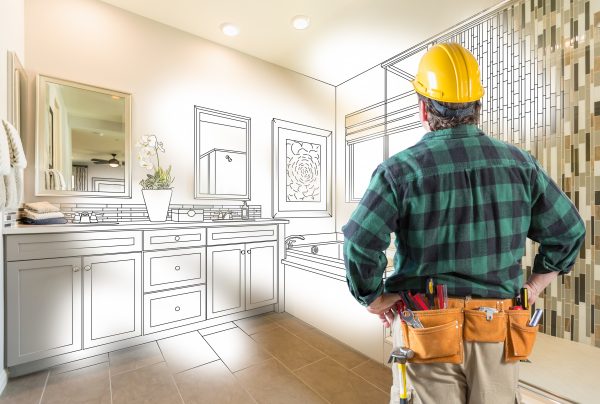Hiring a reputable and reliable contractor should be easy. Unfortunately, it isn’t. Everyone has heard horror stories about a home improvement project going over budget and well beyond its deadline. Often the common denominator among these cautionary tales is the contractor.
Because homeowners are eager to begin, many times they ignore or rush through critical steps that could’ve prevented problems. The following recommendations will help you feel comfortable hiring a contractor who respects you, your home, and, ultimately, your goal for this project.
REQUEST REFERENCES
As you begin your search for the right craftsman, consider asking friends, relatives, and even co-workers for references. As you’re requesting names and numbers, be sure the contractor has the skills required for your particular job. For example, if his specialty is masonry, he may not be the right person to build an addition. If you’ve watched neighbors complete a remodeling project that’s similar to the one you have in mind, ask if they were satisfied with their contractor. If so, add this person to your list.
ASK THE RIGHT QUESTIONS

Once you’ve gotten the names and contact information for at least three contractors, prepare your questions. You’ll want to ask for proof that your contractor is licensed and has adequate insurance coverage, including workers’ compensation and general liability insurance in case accidents occur on the job. Request copies of these policies and file them away. Find out how long has the company been in business as you’ll be more comfortable hiring a well-established contractor. Determine what work will be done by the contractor’s employees and what may be done by subcontractors, who should also be licensed and insured. Request photos of past work and references so you can contact previous clients and ask them any additional questions you may have. For complete peace of mind, check the disciplinary boards, Better Business Bureau, and local court records to rule out any complaints or history of litigation against the contractor.
GET AT LEAST THREE BIDS AND ESTABLISH THE PAYMENT SCHEDULE
With any project, it’s smart get multiple bids so you can compare. But as you do, be sure each includes the same scope of work as well as the same materials. Once you have the written bids in hand, don’t be afraid to negotiate. When it comes to finances, you’ll want to iron out the payment schedule and have it written into the contract. Be wary of anyone who wants you to pay more than 10 percent of the job total before getting started. Of course, depending on materials, that figure may increase slightly, but you don’t want to hand over a larger percentage before work begins. Further, don’t pay the full balance until all work has been completed to your satisfaction.
FOLLOW PROPER PERMIT PROCEDURE

Many remodeling projects require permits. Before signing a contract, make sure your contractor will be getting permits for the job. While some suggest forgoing this step to cut costs, you may be in violation of local ordinances, which can not only lead to significant fines and a work shut-down, but it may also cause issues down the road when you try to sell your home. Getting permits is a safeguard for the homeowner as it means the contractor’s work will be inspected by a local official who signs off that it’s up to code.
ESTABLISH GROUND RULES

Once you’ve hired a contractor, you’re probably eager to get the project under way. But having workers in your home for weeks or months at a time can be a challenge. Before you begin, set some parameters. Talk with your contractor about the hours work will start and end each day. Will workers be using your bathroom or will they be renting a portable toilet? If it’s the latter, where will it be placed on your property? Ask how often clean-up will occur. If there’s ample dust involved, you’ll want to know it will be taken care of at the end of each work day.
As much as you may want to hire a contractor and start your project, doing your due diligence before hiring a craftsman will ensure you get the outcome you want while minimizing the headaches.
